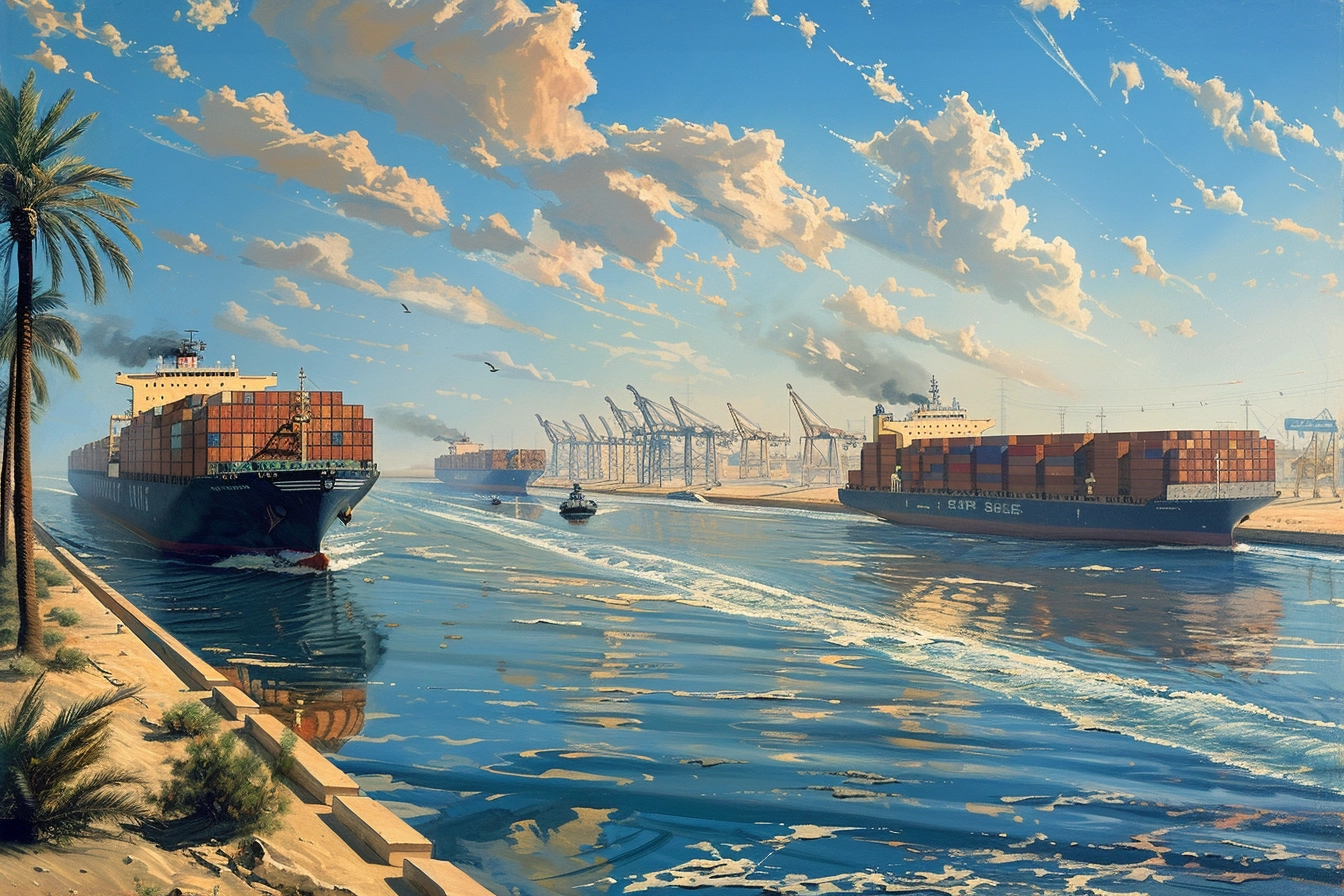Most of you have probably already noticed that there have been disruptions again on one of the world's most important trade routes. With this article we would like to look at the challenges that arise from a logistics perspective and at the same time consider the burden on the environment and the connection to the Gaza conflict.
Background of the crisis
The recent tensions in the Suez Canal and associated disruptions are largely due to attacks by Houthi rebels. The Houthis justify their attacks in the Red Sea with the support of the militant Islamist Hamas and the Palestinians in the Gaza Strip. They are demanding food deliveries and medical aid for the contested area and are threatening further attacks until Israel ends its offensive in the Gaza Strip. Ships will be attacked, hijacked or kidnapped.
These conflicts are part of broader regional tensions that not only threaten the security of shipping lanes but also affect global trade dynamics. Many Western nations have taken steps to increase security and ensure free passage by sending ships to the region to defend the trade route. also taking part in this operation and is currently traveling in the region with the frigate “Hessen”.
Impact on logistics
As a result of the attacks, many shipping companies are forced to route their ships via longer routes around the Cape of Good Hope, extending the journey time by an average of over ten days. This diversion not only significantly increases operational costs – an estimated additional $1 million in fuel costs per round trip – but also creates significant supply chain delays. However, not all container ships bypass the Suez Canal, as so far only ships that are connected to Israel have been threatened. The Kiel Trade Indicator shows a drop in transit times of almost 50%, so that between 40 and 50 ships still pass through the strait every day.
Environmental pollution and economic consequences
The extension of routes leads to a significant increase in CO2 emissions, which puts additional strain on the environment. Economically, the higher costs and delays are driving up prices for goods and jeopardizing the recovery of the global economy, especially if the conflict continues to escalate and affect other key trade routes.
Impact on destination ports and long-term considerations
Destination ports must deal with significant delays and uneven distribution of ship arrivals, creating bottlenecks and logistical challenges. If the situation eases and normal routes resume, this could lead to a short-term congestion of port infrastructure as more ships suddenly arrive again at the same time.
Strategies for traders and importers
During this uncertain time, retailers and importers may consider diversifying their supply chains and increasing their inventories to guard against further disruptions. Long-term contracts and flexible supply arrangements could also help cushion the impact of price increases.
Questions about dealing with trade route conflicts
How can companies and governments respond to the changing geopolitical landscape and its impact on global trade routes like the Suez Canal? The current Suez Canal crisis raises important questions: Is diversifying supply chains and increasing inventories sufficient to protect against future disruptions? What role does international cooperation play in securing these critical infrastructures and what can effective measures to stabilize the region look like? These questions highlight the need to consider both short-term responses and long-term strategic considerations to ensure the reliability and efficiency of global trade in an uncertain world.






